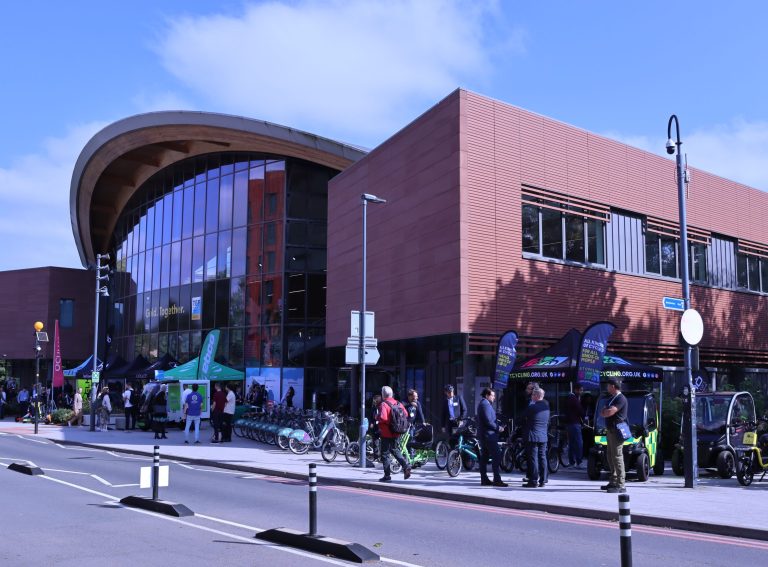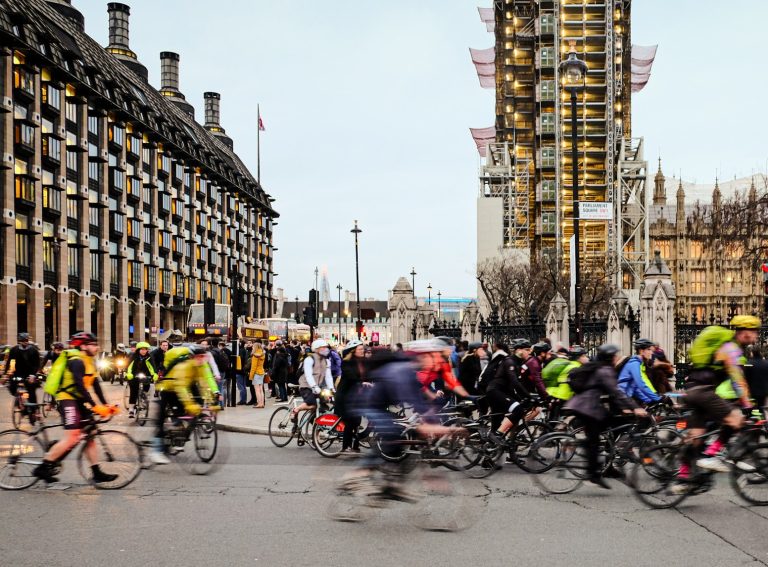Networks of protected bicycle lanes in low and middle-income cities can significantly reduce carbon emissions, lower transport costs and prevent premature road fatalities, according to a new report by ITDP’s global Cycling Cities campaign.
The study, which was supported by the FIA Foundation, looked at the impacts of existing protected bicycle lanes in Bogotá, Colombia and Guangzhou, China.
Using cyclist counts and intercept surveys, combined with lifecycle emission factors for various modes, its calculated that these networks prevent the emission of around 22,000 tonnes of CO2-eq per year in Bogotá and 16,000 tonnes per year in Guangzhou.
Considering the low cost of building protected bicycle lanes, this equates to roughly 10 times as much GHG reduction per dollar spent on infrastructure for essential, but costlier, metro rail systems, said ITDP.
Protected bicycle lane networks also provide social and economic benefits too.
These networks prevent around 300 premature deaths every year in Bogotá and 50 in Guangzhou.
People who can bicycle instead of driving or riding transit save time and money on every trip as well. Bogotá’s network cost an estimated $132 million to build and saves travellers around $80 million a year. Guangzhou’s network cost an estimated $69 million to build, saving travellers around $30 million a year.
The ITDP said the lessons drawn from the report demonstrate that networks of protected cycle lanes should be considered “essential” as they are “efficient, cost-effective, and easy-to-build investments”.
The researchers argue that bicycle lanes need to be treated in the same way as major pieces of urban infrastructure like metros, bus rapid transit systems and highways.
“All too often, walking and cycling are neglected in urban design policy, even though they make up a third of all urban journeys and as our study shows, have significant economic, environmental and health benefits,” the FIA Foundation’s Deputy Director Sheila Watson told Zag Daily.
“Using real world data from South America and China shows not only that protected bicycle lanes return their value within a single year, but that every dollar invested in them results in a reduction of greenhouse gas emissions equivalent to the emissions created by the same investment in highways. Dollar for dollar therefore cycle lanes are the better investment. Cities should invest in them and make them a prominent and integrated part of their transport design plans if they want to deliver on health, climate and equity commitments.”




